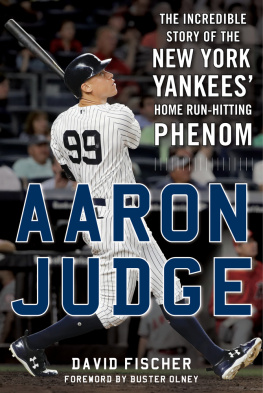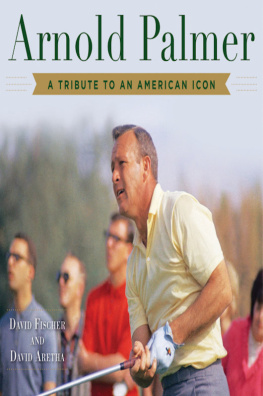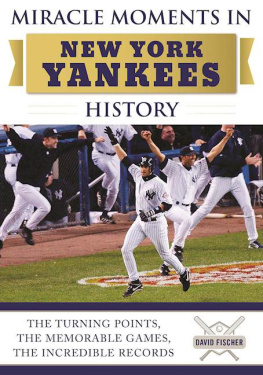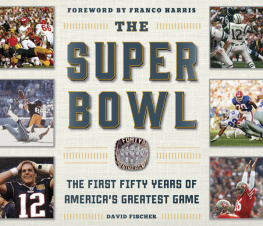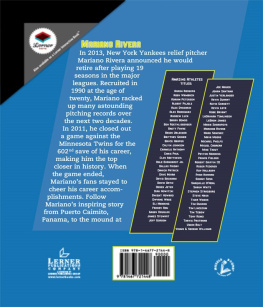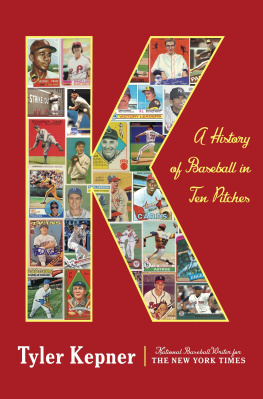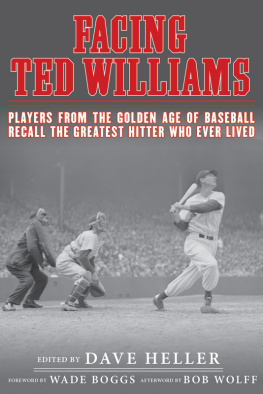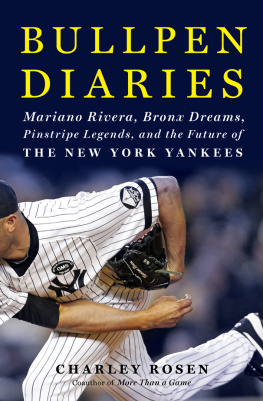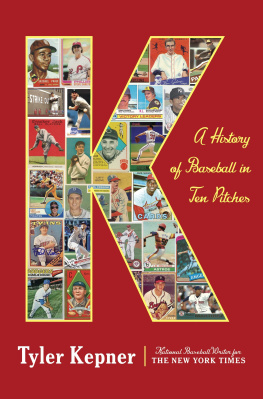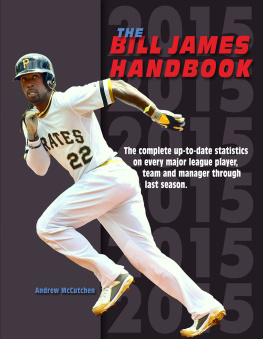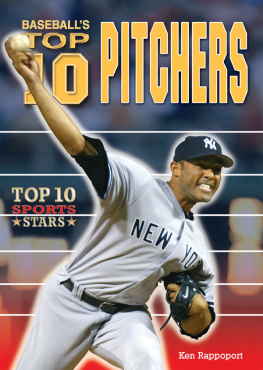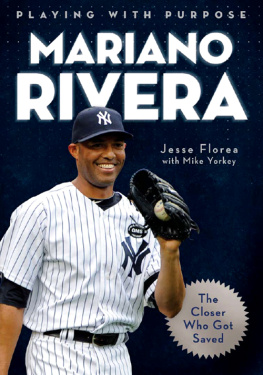Copyright 2014 by David Fischer
All rights reserved. No part of this book may be reproduced in any manner without the express written consent of the publisher, except in the case of brief excerpts in critical reviews or articles. All inquiries should be addressed to Sports Publishing, 307 West 36th Street, 11th Floor, New York, NY 10018.
Sports Publishing books may be purchased in bulk at special discounts for sales promotion, corporate gifts, fund-raising, or educational purposes. Special editions can also be created to specifications. For details, contact the Special Sales Department, Sports Publishing, 307 West 36th Street, 11th Floor, New York, NY 10018 or .
Sports Publishing is a registered trademark of Skyhorse Publishing, Inc., a Delaware corporation.
Visit our website at www.sportspubbooks.com.
10 9 8 7 6 5 4 3 2 1
Library of Congress Cataloging-in-Publication Data is available on f ile.
ISBN: 978-1-61321-639-2
Printed in the United States of America
For my grandpa Jack Baron, a Brooklyn Dodgers fanatic, who told me stories about another legendary No. 42, Jackie Robinson.
CONTENTS
FOREWORD
I F YOUVE EVER studied the best major league pitchers, either from a seat at the ballpark or on television, when a batter swung and missed, you, as a decent ballplayer in your day, might have muttered, I couldve hit that one. And maybe you could have.
But maybe not. Probably not. And if that pitcher was Mariano Rivera, almost certainly not.
Page after page in Facing Mariano Rivera , you will read how he not only baffled the best major league hitters with his cut fastball, he often shattered their bats. Of all the gifts he received in his 2013 farewell tour, he said his favorite was a rocking chair constructed of broken bats from the Minnesota Twins. If youre a left handed hitter, says an opponent who later would be a Yankees teammate, you almost have to look for an outside pitch and pull it, because if its middle in, its going to break your bat. If only David Fischer could have interviewed some of those shattered bats.
No need to tell you here the most successful hitter against baseballs greatest closer, but even he acknowledges, It was never a comfortable at bat. Another hitter who once swatted fifty home runs (none off Rivera), analyzes that His cutter has four-seam fastball spin and then it cutsit cuts late... and he learned to throw a two-seam fastball that broke in on righties.
For all of the hitters testimony, perhaps the most authoritative comments are from his Yankees teammates. From the outfielder who says, He was the Devil when I was playing against him, but when I came here, he became God because hes on our side. From the right-handed pitcher who says, His arm slot is the same every pitch. From the bullpen catcher who says, I dont think he ever threw a ball that ever bounced in my twelve years of catching him in the bullpen. He would pitch up and down, and in and out, but never in the ground.
And as much as all these opposing batters dislike trying to hit that cut fastball, they praise him for never showing up any of them. Once you get to know Mariano, one says, you respect him more as a person than as a player. As challenging and frustrating as facing him was, they seem to enjoy having had the opportunity. And now the opportunity in these pages to describe what it was like.
Dave Anderson
INTRODUCTION
D URING HIS ILLUSTRIOUS career, Mariano Rivera faced over five thousand batters, from Brady Anderson to Gregg Zaun; from stars like David Ortiz, who faced him thirty-four times, to neophytes like Bill Selby, who faced him twice. The list of batters included in this book run the gamut from Hall of Famers like Roberto Alomar, who managed to hit .455 (5 for 11) against him, to All-Stars like Alex Rios, who didnt have a hit in 15 plate appearances, to Jason Smith, a lifetime .212 batter who inexplicably hit .600 (3 for 5) against Rivera.
I dont think I owned him, says Smith. I was very lucky.
The success or (more often than not) failure rate when facing Rivera for each player interviewed for this book has been documented to the best of my ability. Some players will boast of their personal accomplishments against Rivera, while others can only laugh at themselves for their futility against him. Whatever the case, each of the speakers unique achievements, either positive or negative, are recognized under the heading labeled Mo Cred, as in credibility.
Whatever the results compiled by individual batters, this much is true: If there was one relief pitcher in the last two decades who personifies the word closer, a stadium full of baseball experts would pick Rivera. Few, if any, relief pitchers enjoyed the immensely positive reputation for finality that Rivera earned with the Yankees. As manager Joe Girardi said: I love when he comes into the game. You feel like its over.
Finality is a subject often cited by the nearly 150 baseball people who spoke to me about Rivera. I conducted the interviews during the 2013 season, while Rivera was still an active player; hence, the recollections of the players are spoken in the present tense. One of the first ballplayers I spoke with was Mike Sweeney, who compares Riveras entrance music to the soundtrack of a horror movie, because you hear that music and you know whats going to happen, says Sweeney. Mariano will finish the game and get the save.
The vision of Rivera bursting through the bullpen door was enough to give even the most malevolent opponents serious pause. With the Yankee Stadium sound system blaring Metallicas Enter Sandman, and the fans raucously cheering in anticipation, Rivera jogged across the outfield grass and strode gracefully to the mound. The music meant that entering the game is Mariano Rivera, the reedy right-handed relief pitcher from Panama with a steely focus and a sense of mental calm so great he could sleep through a thunderstorm. He fires seven or eight warm-up pitches, stares blankly at his target with shark-like eyes, and then gets down to the serious business of recording the three toughest outs in baseball.
More than anyone else, it was Rivera doing his job that propelled the Yankees to be World Series champions five times, as he was on the mound to record the final out in four clinching Series games in 1998, 1999, 2000, and 2009. October after October, the 6-foot-2, 185-pounder held precarious leads the Yankees had scratched together. He literally attacked rival hitters with one pitch: an unsolvable cut fastball that has been called a combination of thunder and location. That pitch, more than any other subject, was a recurring theme among the pitchers and position players who participated in this project. All of the batters I spoke to, particularly those hitting left-handed, had vivid memories of frustrating plate appearances that more times than not ended with them holding a piece of their own broken bat.
Sometimes a ballplayers time was limited or our time together cut short, resulting in a briefer interview than I had anticipated. Many of these players sincerely apologized for not being able to devote more time to talking about Rivera, though their comments are just as insightful and revealing. In these instances, I have set off the text in a special box titled Mo Respect, an appropriate moniker to express the admiration they feel toward the last major league baseball player to wear No. 42.
The ballplayers represented in this book told many amusing stories and had an uncanny memory for game situations, pitch sequences, base runners, the name of the umpire behind the plate, and similar details that occurred in games played many years ago. Time and again, I was amazed by a players instant recall and unusual ability to provide the play-by-play for a regular season game occurring in the last decade that had little or no impact on the leagues pennant race. While this book is based on their memories, I do provide footnotes to occasionally set the record straight, to elaborate on their stories, and to place game events in historical context.


